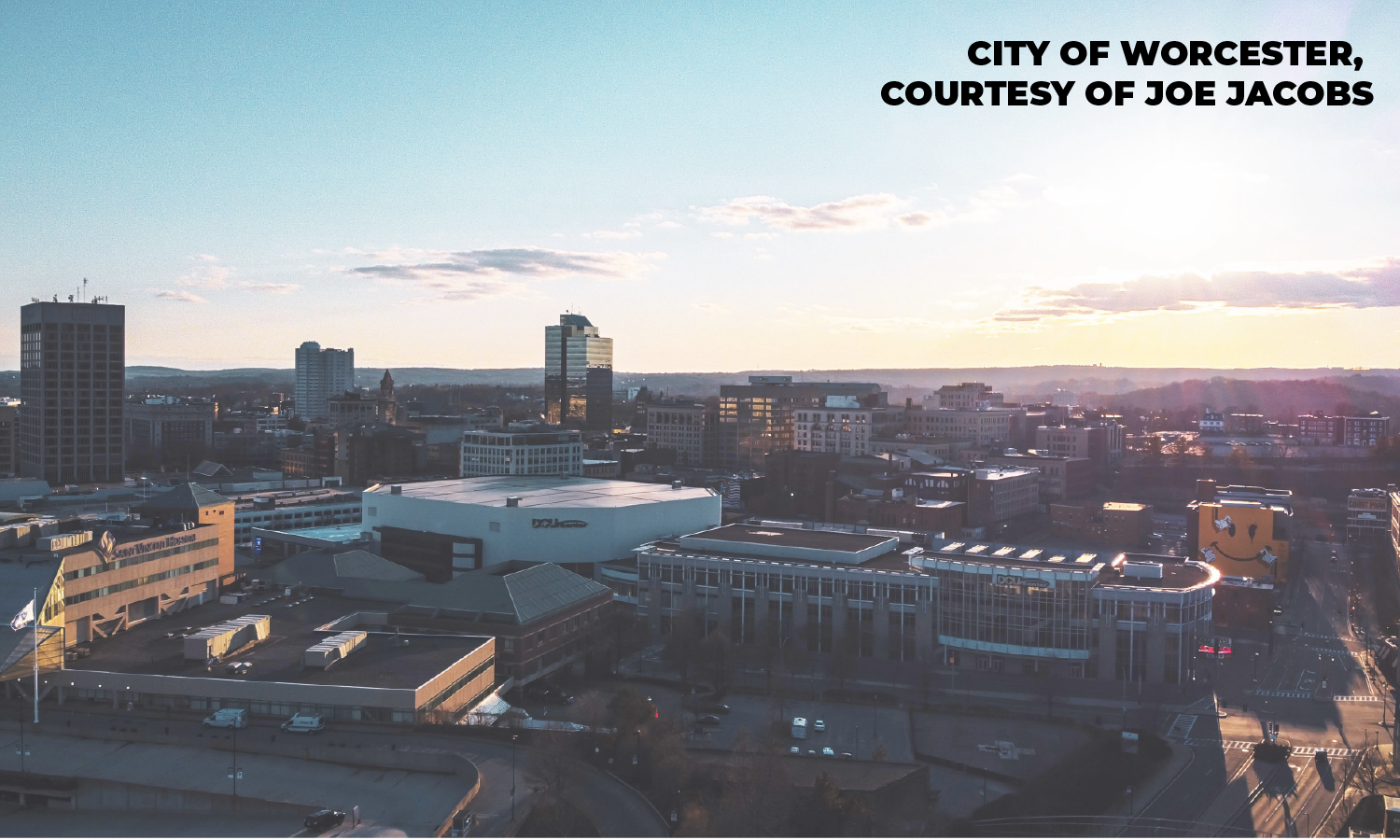
RYAN CASHMAN
Up until March of 2020, the most recent pandemic to reach a scale of global impact was the Influenza Pandemic of 1918. The images and memories of that time are distant and aloof to those of us who are living – grainy, black-and-white photographs of people draped in dark garments, their bright white masks shining amidst a sea of depressing grey. Compare those images to those we see today: a colorful and diverse array of face masks, signs promoting solidarity with those workers whose jobs do not afford them the opportunity to work from home, the clever and creative ways in which we have all managed to stay connected to each other.
This is a different pandemic, happening during a different and unique point in American history. Yet, how will it be remembered in 100 years? Will the images of 2020 become as aloof and distant as those of 1918? Will we forget the stories and the struggles of people, as we so often have a tendency to do?
Here in Worcester, the COVID-19 pandemic will be remembered in an inventive new way thanks to The COVID-19 Chronicles. Initiated and managed by William “Bill” Wallace, of the Worcester Historical Museum, and Joe Cullon, an associate teaching professor of Digital Humanities at WPI, The COVID-19 Chronicles is a community archive, an experiment in social history.
“This is a moment of momentous change for our community and the world,” said Wallace. “We’re looking to capture the moment and how we are responding to it. Every piece is part of the larger story.” For Wallace, history has never just been about “the famous names” or the events historians choose to remember. Instead, his assertion is that it’s the everyday people who are the central part of the story.
“It’s the responsibility of the museum to be like the family album, the family treasure trove,” said Wallace. “Worcester is the museum, and we are looking to engage in more storytelling with a more diverse cast.”
In that way, the COVID-19 Chronicles acts like an online community pinboard, creating, as Wallace said, “a vivid patchwork.” Everyone who wants to contribute something can do so. There have been poems and stories from nurses at UMass and teachers at Worcester schools. Images of Zoom proms and Zoom weddings. The Worcester Youth center posted a video collection about how young people are responding to the pandemic. Posts have been written in both English and Spanish.
“It’s a hodge-podge on purpose,” said Cullon. “It’s allowing people to tell us what is important to them.” Cullon has taken on the role of digital archivist, aiding in developing software for the museum to use as a tool that will allow for more public interaction.
“This was important to do, and we had to do it right away,” said Cullon. The approach to the archive is “from the bottom up.” The most emphasis would be placed on stories from the people as a way of creating a social and oral history that will be vividly remembered for years to come.
For both Wallace and Cullon, this is a different history game. It’s about trusting the material they are receiving while simultaneously creating an environment in which people are comfortable sharing their experiences. Part of that comfort is making the archive more accessible and interactive. Cullon and one of his Interactive Media students are working on updates to the website that will, according to Cullon, “find better ways to communicate and spur people into acts of participation.”
The COVID-19 Chronicles are not the only social history project which the Worcester Historical Museum has undertaken. There is Worcester’s Black History Project, the Latino History Project and the LGBTQ History Project. Wallace sees all of these projects as progressing towards a new goal for how history is collected by the museum. “The model of the museum is changing,” he said. “It’s the people’s museum.”
In response to the notion that this history might one day become muted, Wallace said, “I find it hard to believe an impact like this will be muted. I think people don’t want to be lost in the story. … The uncertainty of the time makes people very interested in who they are.”
Cullon responded, “The most powerful moments on how the pandemic is affecting people come in works of art and images in which people have come together, especially early on when there was a make-shift vernacular.” Meaning: We’re all in this together.
As for the future of the project, Wallace sees no real end. “We’ll move on to other stories, but it’s an open invitation. That’s the challenge we want.” After a brief pause, he added, “In sharing what was yours, it becomes ours. It becomes Worcester. Make the story of Worcester whole.”






